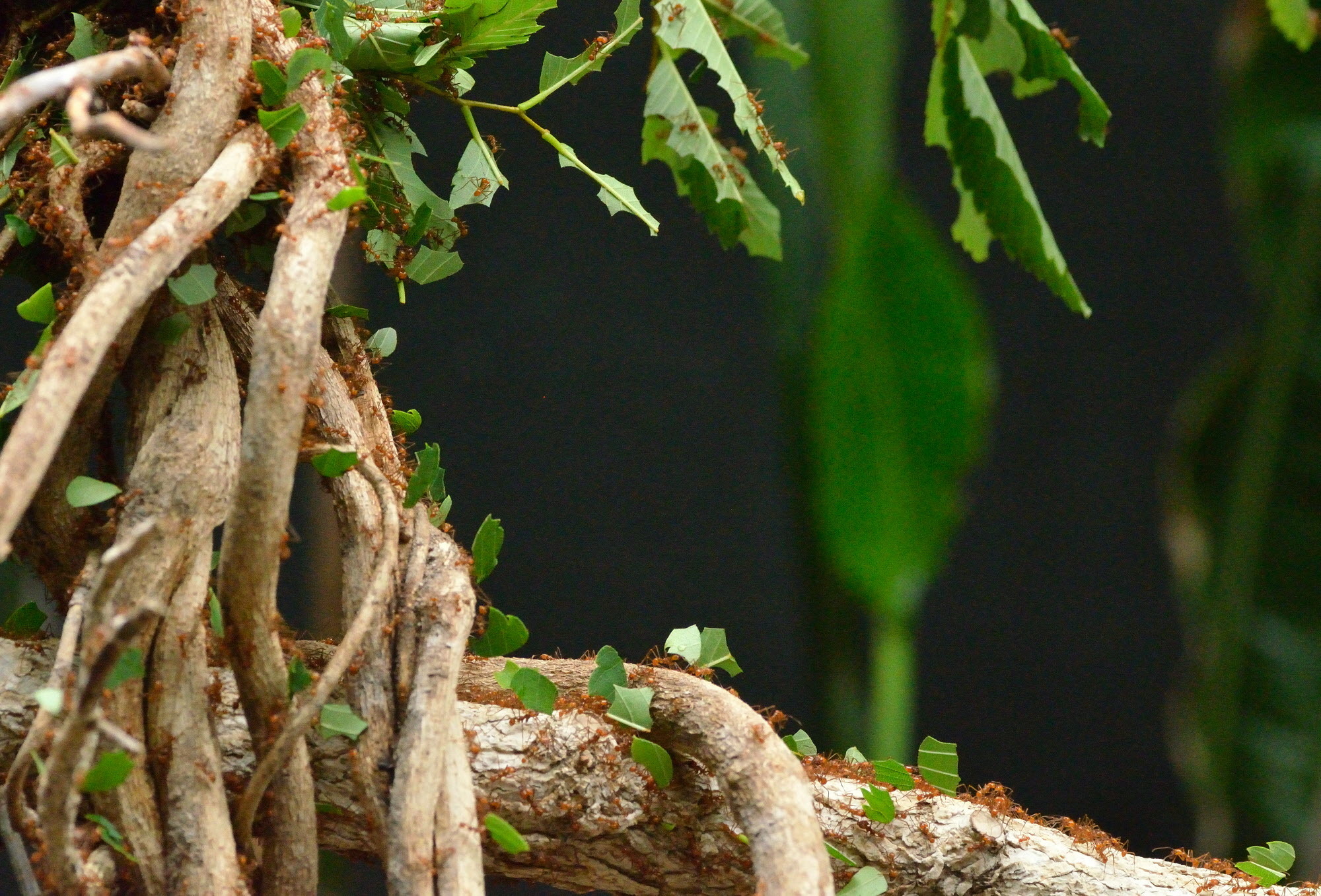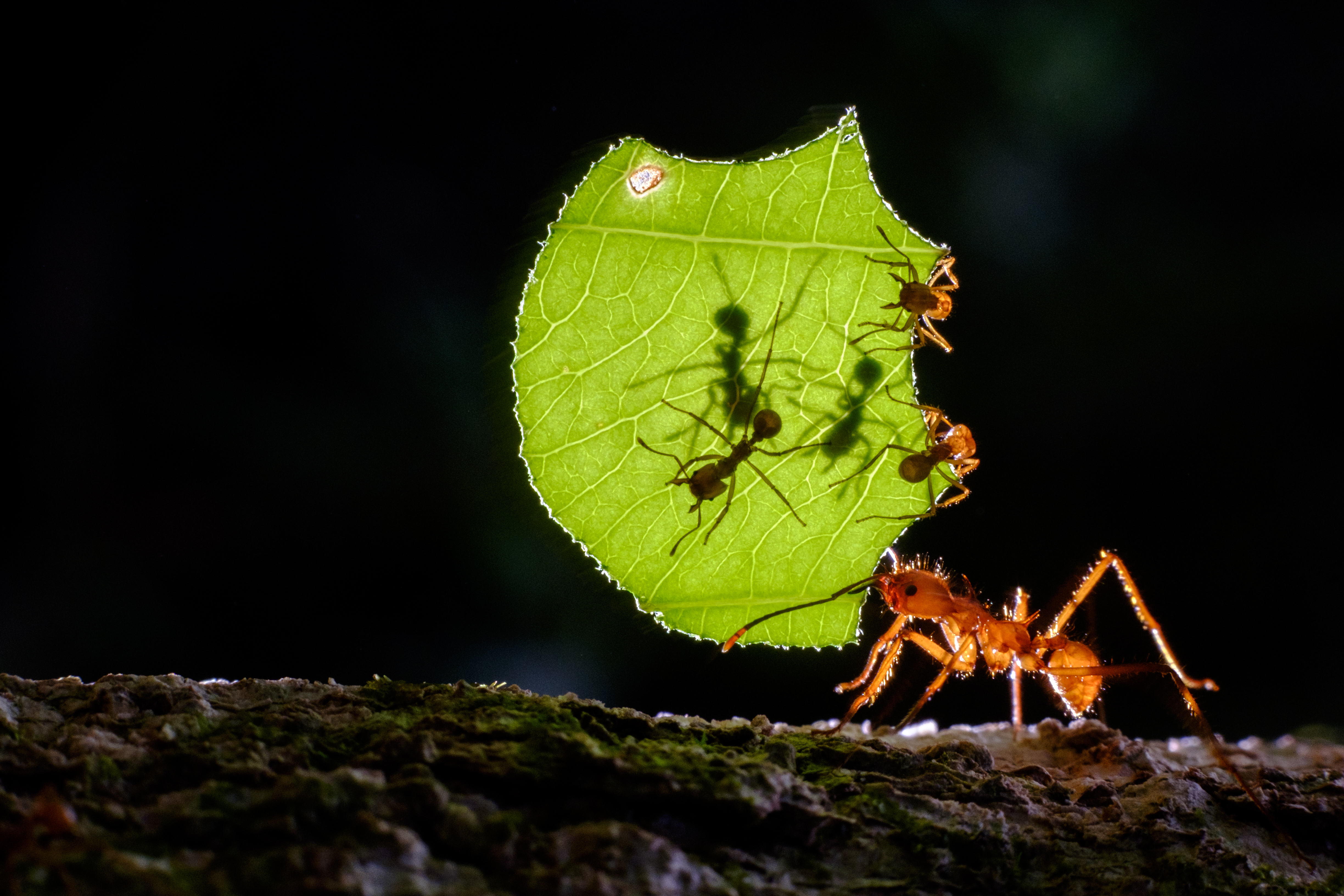The caste system and gardening proficiency of leafcutter ants
Deep in the rainforest of Arima Valley, Trinidad lies a perfectly manicured trail. In the daylight, this thin strip of dirt looks like it was created by human feet or perhaps by the tires of mountain bikes as it curves throughout the jungle floor. At night however, the makers of this super highway are revealed —millions of ants. There are 47 known species that fall under the generic name of leafcutter ants but all are endemic to South and Central America, Mexico, and parts of the southern United States. They create these pathways in order to carry freshly cut leaves, flowers, and other vegetation back to their nest. However, this is not their food supply but rather fertilizer to grow their crop: fungus.
Leafcutter ants have a symbiotic relationship with certain fungal species called ant–fungus mutualism. Much like how humans farm crops, the ants cultivate the fungus by providing them with freshly cut greens, protecting them from molds and pests, and clearing them of decaying material and garbage. The fungus in turn is a food source for the ants’ larva. In just a few years time this system can turn the central mound of the underground nest into a structure more than 98 feet across with more than eight million individuals living within.

Image credit: Courtesy of Wildscreen Exchange
Next to ours, leafcutter ants form the largest and most complex animal societies on Earth. The ant colony is divided into castes and depending on function, their bodies evolve to meet the task they are assigned. Foragers, or mediae, are the ones we see bringing the leaf fragments back to the nest. A forager’s jaw vibrates a thousand times a second to be able to cut off pieces of a leaf and they can carry plant fragments that are 20 times their own body weight. Minims are the smallest workers with head widths less than 1mm, and they tend the fungus gardens. Minors are slightly larger with head widths up to 2.2 mm. They are the first line of defense, patrolling the foraging lines and attacking any disruptions. However, if there is large debris to clear, heavy treasures to carry back, or an intruder like a tarantula, soldiers, or majors, come to the rescue. With head widths up to 7mm, they are the largest worker ants. One queen rules the colony and only she produces larva.

Image credit: Courtesy of Wildscreen Exchange
No matter the job, all leafcutter ants in a colony are produced from the same larva. Certain genes are switched off or on depending on the needs of the nest. The metaphor of millions of ants working together and with their environment is not lost on entomologists. Leafcutter ants provide an example of how a massive society can sustainably coexist, not only within their habitat but also benefiting from their taking care of it. Every job contributes to their intentional gardens and the crops of fungus they grow.


